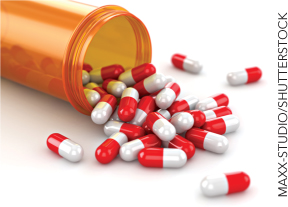Big Idea Three: Trade-offs Are Everywhere
Vioxx users were outraged when in September 2004 Merck withdrew the arthritis drug from the market after a study showed that it could cause strokes and heart attacks. Vioxx had been on the market for five years and had been used by millions of people. Patients were angry at Merck and at the Food and Drug Administration (FDA). How could the FDA, which is charged with ensuring that new pharmaceuticals are safe and effective, have let Vioxx onto the market? Many people demanded more testing and safer pharmaceuticals. Economists worried that approved pharmaceuticals could become too safe.
Too safe! Is it possible to be too safe?! Yes, because trade-offs are everywhere. Researching, developing, and testing a new drug cost time and resources. On average, it takes about 12 years and $1 billion to bring a new drug to market. More testing means that approved drugs will have fewer side effects, but there are two important trade-offs: drug lag and drug loss.
Testing takes time so more testing means that good drugs are delayed, just like bad drugs. On average, new drugs work better than old drugs. So the longer it takes to bring new drugs to market, the more people are harmed who could have benefited if the new drugs had been approved earlier.4 You can die because an unsafe drug is approved—you can also die because a safe drug has not yet been approved. This is drug lag.

Testing not only takes time, it is costly. The greater the costs of testing, the fewer new drugs there will be. The costs of testing are a hurdle that each potential drug must leap if it is to be developed. Higher costs mean a higher hurdle, fewer new drugs, and fewer lives saved. You can die because an unsafe drug is approved—you can also die because a safe drug is never developed. This is drug loss.
Thus, society faces a trade-off. More testing means the drugs that are (eventually) approved will be safer but it also means more drug lag and drug loss. When thinking about FDA policy, we need to look at both sides of the trade-off if we are to choose wisely.
Trade-offs are closely related to another important idea in economics, opportunity cost.
Opportunity Cost
The opportunity cost of a choice is the value of the opportunities lost.
Every choice involves something gained and something lost. The opportunity cost of a choice is the value of the opportunities lost. Consider the choice to attend college. What is the cost of attending college? At first, you might calculate the cost by adding together the price of tuition, books, and room and board—that might be $15,000 a year. But that’s not the opportunity cost of attending college. What opportunities are you losing when you attend college?
The main opportunity lost when you attend college is (probably) the opportunity to have a full-time job. Most of you reading this book could easily get a job earning $25,000 a year or maybe quite a bit more (Bill Gates was a college dropout). If you spend four years in college, that’s $100,000 that you are giving up to get an education. The opportunity cost of college is probably higher than you thought. Perhaps you ought to ask more questions in class to get your money’s worth! (But go back to the list of items we totaled earlier—tuition, books, and room and board—one of these items should not count as part of the opportunity cost of college. Which one? Answer: Room and board is not a cost of college if you would have to pay for it whether you go to college or not.)
The concept of opportunity cost is important for two reasons. First, if you don’t understand the opportunities you are losing when you make a choice, you won’t recognize the real trade-offs that you face. Recognizing trade-offs is the first step in making wise choices. Second, most of the time people do respond to changes in opportunity costs—even when money costs have not changed—so if you want to understand behavior, you need to understand opportunity cost.
What would you predict, for example, would happen to college enrollment during a recession? The price of tuition, books, and room and board doesn’t fall during a recession but the opportunity cost of attending college does fall. Why? During a recession, the unemployment rate increases so it’s harder to get a high-paying job. That means you lose less by attending college when the unemployment rate is high. We therefore predict that college enrollments increase when the unemployment rate increases; in opportunity costs terms, it is cheaper to go to college. In 2009, as the unemployment rate soared, the college enrollment rate hit 70.1%, the highest rate ever.